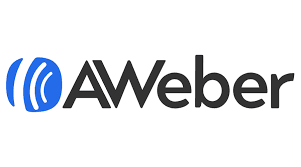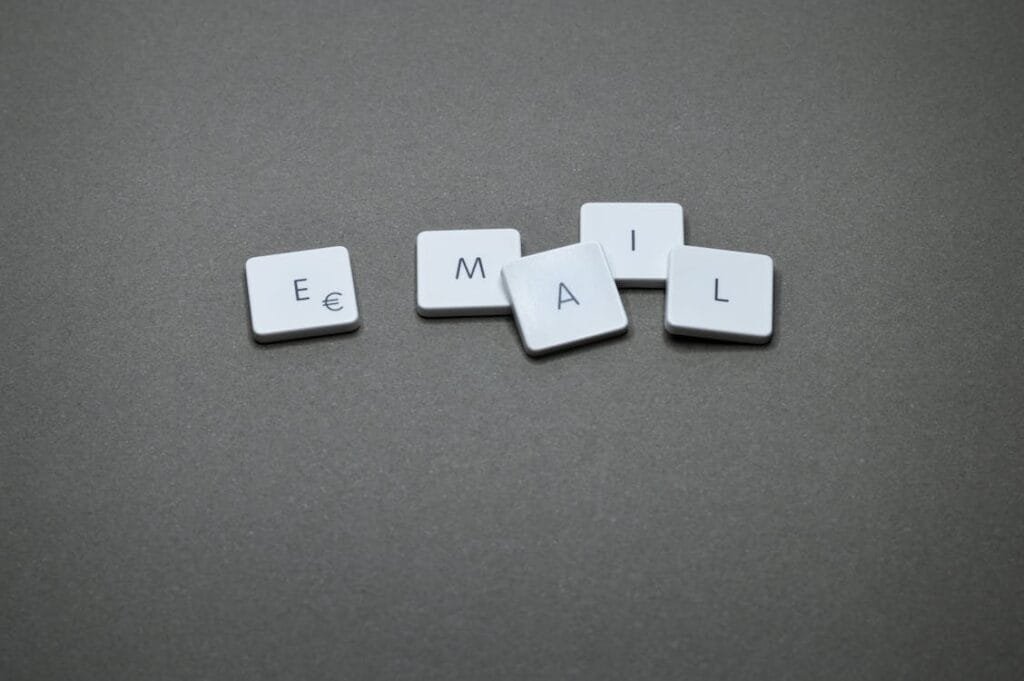Welcome to the ultimate showdown between two giants in the email marketing world: GetResponse and AWeber. As we step into 2024, choosing the right email marketing tool is more crucial than ever. Whether you’re a small business owner, a marketing professional, or just someone curious about email marketing, this guide is tailored just for you. Let’s dive in and compare these two platforms, not just in features but in how they can turbocharge your email marketing strategy!
| GetResponse | AWeber |
|---|---|
 |  |
| G2 Score – 4.2 out of 5 stars | G2 Score – 4.2 out of 5 stars |
| TrustRadius Score -8.0 out of 10 | TrustRadius Score – 7.5 out of 10 |
Ease of Use: A Critical Factor in Email Marketing Success
When it comes to email marketing tools, ease of use isn’t just a luxury; it’s a necessity. Both GetResponse and AWeber promise a user-friendly experience, but how do they really stack up?
GetResponse: User-Friendly Design and Intuitive Features
GetResponse has established itself as a leader in the realm of user-friendly email marketing tools. The ease of use begins right from the moment you log in. The dashboard is designed with clarity and simplicity in mind, ensuring that even beginners can navigate through it with ease. The intuitive layout allows quick access to vital features like contact management, email creation, and analytics, simplifying the user journey.
The platform shines particularly in the realm of campaign creation. GetResponse has mastered the art of making complex tasks seem effortless. Whether you’re setting up a simple campaign or diving into more complex automation, the process is guided and straightforward. This user-friendly approach extends to their email templates and design tools. The drag-and-drop editor is a standout feature, allowing even those with no design background to create visually appealing emails. Customization is a breeze, and the variety of templates means there’s something for every occasion and campaign.
Automation in GetResponse is designed to be approachable. The platform demystifies the often-intimidating world of email automation, presenting it in an easy-to-understand format. From setting up autoresponders to segmenting your audience, the process is broken down into simple, manageable steps. This accessibility makes GetResponse an appealing choice for both newcomers to email marketing and seasoned marketers looking for efficiency without sacrificing depth.
AWeber: Simplifying the Essentials
AWeber takes a different yet equally effective approach to user-friendliness. The platform’s interface is clean and straightforward, reminiscent of the classic email marketing tools but with modern efficiency. This familiar layout reduces the learning curve, especially for those who have basic knowledge of email marketing tools.
Creating campaigns in AWeber is a smooth experience. The platform guides users through each step, ensuring that they don’t get overwhelmed by choices. This step-by-step approach is particularly beneficial for beginners who might find the array of options in email marketing daunting. AWeber’s templates, while not as extensive as GetResponse’s, offer functionality and simplicity. The designs are straightforward, catering to users who prefer a more direct and no-frills approach to email design.
When it comes to automation, AWeber covers all the basics without overcomplicating the process. The platform provides essential automation features like autoresponders and basic segmenting in a user-friendly manner. This simplicity is key for users who require basic automation capabilities without the need for complex setup.
Assessing Ease of Use in Email Marketing Tools
Both GetResponse and AWeber excel in providing user-friendly experiences but cater to different user needs and preferences. GetResponse offers a more feature-rich environment with an emphasis on ease of use and customization, making it suitable for a wide range of users, from beginners to advanced marketers. AWeber, with its straightforward and no-frills approach, appeals to those who need basic functionality without the complexity. The choice between the two will largely depend on the individual user’s requirements, experience level, and the specific demands of their email marketing campaigns.
Deliverability: The Lifeline of Your Email Campaigns
Now, let’s talk about a factor that can make or break your email marketing efforts: deliverability. It’s one thing to create a stunning email, but quite another to ensure it actually lands in your audience’s inbox and not the dreaded spam folder.
GetResponse: Ensuring High Deliverability with Advanced Features
GetResponse has built a solid reputation for its deliverability rates, which is a core aspect of any email marketing campaign’s success. The platform’s commitment to high deliverability starts with its robust infrastructure and ongoing efforts to maintain a strong sender reputation. This diligence ensures that emails sent through GetResponse have a higher likelihood of avoiding the spam folder and reaching the intended inboxes.
A key feature that sets GetResponse apart is its advanced spam testing tools. These tools allow users to check their emails against various spam filters before sending them. This preemptive approach is invaluable as it helps in modifying content to reduce the chances of being flagged as spam, ultimately enhancing open rates and overall campaign effectiveness.
In addition to these features, GetResponse provides comprehensive analytics and reporting tools. These tools offer insights into various aspects of email performance, such as open rates, click-through rates, and reasons for bounced emails. Such detailed analytics are instrumental in understanding and improving email deliverability over time. They allow marketers to make informed decisions and tweak their strategies for optimal results.
AWeber: Consistency and Reliability in Email Delivery
AWeber, with its longstanding presence in the email marketing arena, has established a reputation for consistent deliverability. This consistency is partly due to its established relationships with major email service providers, ensuring fair treatment of their clients’ emails. These relationships are crucial in maintaining high deliverability rates, as they help in navigating the complex landscape of email spam filters and regulations.
The platform, while perhaps not offering the same level of advanced spam testing as GetResponse, provides sufficient tools to maintain clean and deliverable content. Its focus on creating quality content that naturally aligns with best email practices plays a significant role in maintaining high deliverability rates.
Moreover, AWeber’s reporting tools, though not as extensive as GetResponse’s, provide essential metrics and insights. This data is vital for users to understand their email campaign performance and to make necessary adjustments. The simplicity and clarity of AWeber’s reporting make it easy for users to quickly assess the health of their email campaigns and take action where needed.
The Critical Role of Deliverability in Email Marketing
Deliverability is a critical component of email marketing success, and both GetResponse and AWeber offer robust solutions to ensure emails reach their intended destinations. GetResponse excels with its advanced features and comprehensive analytics, catering to users who seek in-depth insights and control over their email campaigns. AWeber, with its emphasis on consistency and reliability, offers a more straightforward approach, making it ideal for users who prefer simplicity and ease of use.
The choice between GetResponse and AWeber in terms of deliverability will depend on the specific needs and preferences of the marketer. Whether it’s the advanced and detailed approach of GetResponse or the consistent and straightforward method of AWeber, ensuring high deliverability is paramount for the success of any email marketing campaign.
Pricing: Understanding Value for Money
Pricing is a crucial aspect, especially when you’re balancing quality with budget constraints. Let’s dissect how GetResponse and AWeber stack up in terms of pricing and what you get for your investment.
| GetResponse | Basic Plan: Starting from $15/month for email marketing, autoresponders, unlimited landing pages, and basic segmentation. Plus Plan: Starting at $49/month, including automation, webinars (up to 100 participants), and contact scoring. Professional Plan: Starting at $99/month, offering advanced automation, webinars (up to 300 participants), and paid webinars. Max Plan: Custom pricing, providing advanced features like transactional emails, dedicated support, and single sign-on (SSO). |
| AWeber | Free Plan: For up to 500 subscribers, offering basic features like email templates and automation. Pro Plan: Pricing starts at $19.99/month for up to 500 subscribers and increases with the number of subscribers. Includes advanced features like split testing, behavioral automation, and detailed reporting. |
GetResponse: A Flexible Approach to Pricing
GetResponse’s pricing structure is designed to cater to a wide range of needs, offering several tiers that scale up in features and capacity. This flexibility is particularly beneficial for businesses that are in a growth phase, as it allows them to start with a more basic plan and upgrade as their needs evolve. Even at the entry level, GetResponse provides a comprehensive set of features, ensuring that users have access to essential email marketing tools regardless of the plan they choose.
As users move up the pricing tiers in GetResponse, they unlock additional features. These features, such as advanced segmentation, webinar hosting, and CRM integration, are particularly useful for businesses looking to expand their email marketing strategies. Additionally, GetResponse offers a 30-day free trial, which is a significant advantage for those who wish to test the platform’s capabilities before committing to a subscription. Moreover, the platform offers discounts for annual subscriptions, making it a cost-effective choice in the long run for businesses planning to use the service consistently.
AWeber: Clarity and Consistency in Pricing
AWeber’s pricing model is characterized by its simplicity and predictability. Unlike GetResponse, AWeber offers a single plan that varies in price based on the number of subscribers. This straightforward approach eliminates the confusion that can sometimes arise from multiple tiered options, making it easier for users to understand what they are getting for their money. The all-inclusive nature of AWeber’s pricing means that users have access to unlimited emails, automation capabilities, segmentation, analytics, and customer support, regardless of their subscriber count.
For smaller businesses or those just starting out, AWeber’s free plan for up to 500 subscribers is an attractive option. It allows users to explore email marketing without any initial investment. For those willing to commit to a longer-term plan, AWeber offers discounts for annual payments, which can lead to significant savings over time.
Evaluating the Cost-Effectiveness of Email Marketing Tools
When it comes to choosing between GetResponse and AWeber based on pricing, the decision largely depends on the specific needs and budget constraints of the business. GetResponse’s tiered pricing structure offers more flexibility and a wider range of features at different price points, making it suitable for businesses with varying needs and growth plans. On the other hand, AWeber’s straightforward and all-inclusive pricing model is ideal for users who prefer simplicity and predictability in their expenses.
Both GetResponse and AWeber offer competitive pricing and provide value for money, but in different ways. GetResponse’s flexible and feature-rich plans are well-suited for businesses looking for scalability and advanced features. AWeber’s straightforward, all-inclusive plan appeals to those who need a reliable, no-frills email marketing tool at a predictable cost.

Related: Check out our free SEO suite

Customer Support: The Backbone of User Experience
In the world of email marketing, having reliable customer support can be a game-changer. Let’s compare how GetResponse and AWeber fare in providing support to their users.
GetResponse: A Multi-Faceted Approach to Customer Support
GetResponse recognizes the importance of customer support in the user experience, offering a multi-channel support system that includes email, live chat, and phone support. This diversity in support channels means that users can choose the method that best suits their needs and preferences, ensuring a more personalized support experience. The platform’s commitment to providing comprehensive support is evident in the responsiveness and knowledgeability of its support team. Whether users have technical issues, need guidance on best practices, or require assistance with advanced features, the GetResponse support team is equipped to provide timely and effective help.
Beyond direct support, GetResponse has invested heavily in self-help resources. The platform offers an extensive knowledge base, detailed video tutorials, and regular webinars. These resources are invaluable for users at all levels, from beginners needing guidance on basic functionalities to advanced users looking to maximize the platform’s capabilities. This emphasis on educational content not only helps users resolve issues on their own but also enables them to learn and grow their email marketing skills.
AWeber: Consistently Accessible and User-Friendly Support
AWeber’s approach to customer support focuses on accessibility and user-friendliness. The platform offers 24/7 customer support, even on holidays, a feature that is particularly beneficial for businesses operating across different time zones or those that need immediate assistance. This around-the-clock availability ensures that users can get help whenever they need it, providing a sense of security and reliability.
In addition to its accessible support, AWeber provides a wealth of educational content, including guides, tutorials, and webinars. This content is tailored to help users understand and effectively utilize the platform. The focus on educational resources empowers users to not only solve immediate problems but also to develop a deeper understanding of email marketing best practices.
AWeber is known for its friendly and efficient customer service. The support team’s approachability and patience make it easier for users to seek help, creating a supportive environment, especially for those new to email marketing. This emphasis on a user-friendly support experience aligns with AWeber’s overall approach to simplicity and ease of use in its platform.
Comparing Customer Support in Email Marketing Platforms
When evaluating customer support, both GetResponse and AWeber stand out, but with distinct strengths. GetResponse offers a more personalized support experience with multiple channels of communication, appealing to users who value flexibility and direct assistance. AWeber, with its 24/7 availability and focus on user-friendliness, is ideal for users who prioritize constant accessibility and a supportive environment.
The choice between GetResponse and AWeber in terms of customer support will depend on what kind of support experience you prioritize for your email marketing needs. Whether it’s the multi-channel, in-depth support of GetResponse or the always-available, friendly assistance of AWeber, effective customer support is a key element in the success of any email marketing strategy.
Integration Capabilities: Expanding Your Marketing Ecosystem
In today’s digital landscape, the ability of your email marketing tool to integrate with other software is pivotal. Let’s see how GetResponse and AWeber stack up in terms of integration capabilities.
GetResponse: Broadening Horizons with Extensive Integrations
GetResponse has strategically positioned itself as a versatile hub in the marketing ecosystem by offering a wide range of integrations. The platform’s ability to connect with various popular software and services is a testament to its adaptability and forward-thinking approach. For businesses that use multiple tools for CRM, e-commerce, social media, and other aspects of digital marketing, GetResponse provides seamless integration options. This connectivity ensures that data flows smoothly between systems, enabling more cohesive and informed marketing strategies.
The availability of a robust Application Programming Interface (API) is another significant advantage of GetResponse. The API allows for the development of custom integrations, catering to unique business needs that might not be met by standard integrations. This level of customization is particularly valuable for businesses with specific workflow requirements or those using niche tools that are integral to their operations.
Furthermore, GetResponse’s integrations are not only about linking different systems; they also enhance functionality. For instance, integrating with an e-commerce platform like Shopify allows users to create targeted email campaigns based on customer purchase history, behavior, and preferences. Such deep integration capabilities enable users to leverage their email marketing campaigns for maximum impact.
AWeber: Focused Integration for Streamlined Marketing
AWeber takes a more focused approach to integrations, emphasizing quality and functionality. The platform may not offer as vast a range of integrations as GetResponse, but it covers the most essential and widely-used services. This curated selection of integrations ensures that users have access to the tools that are most beneficial for the majority of email marketing strategies.
The ease of setting up integrations in AWeber is a noteworthy feature. The platform is designed to be user-friendly, and this extends to its integration capabilities. Even those with limited technical expertise can easily connect AWeber with their preferred platforms, making the overall email marketing process more efficient and data-driven.
Moreover, AWeber ensures that each integration it offers adds significant value to the user’s email marketing efforts. Whether it’s for data synchronization, automation, subscriber engagement, or analytics, the integrations are designed to enhance the capabilities of the email marketing platform and, by extension, the effectiveness of the user’s marketing campaigns.
The Strategic Importance of Integration in Email Marketing
In today’s digital marketing landscape, the ability to integrate an email marketing tool with other software is a key factor in its effectiveness. GetResponse’s extensive and customizable integration ecosystem makes it ideal for businesses with diverse and evolving software needs. On the other hand, AWeber’s focused and functional integrations are perfect for users who value ease of use and immediate practicality.
Analytics and Reporting: Gaining Insights into Your Campaigns
In email marketing, the ability to analyze and understand your campaign performance is essential. Let’s examine how GetResponse and AWeber handle analytics and reporting.
GetResponse: In-Depth Analytics for Data-Driven Strategy
GetResponse has established itself as a powerhouse in providing detailed analytics, a crucial aspect for any marketer looking to evaluate and refine their email campaigns. This platform offers a comprehensive analytics suite that covers a wide range of metrics. Users can delve into specifics like open rates, click-through rates, subscriber geographical data, and the types of devices used to view emails. This depth of data is instrumental for businesses that rely heavily on analytics to drive their marketing decisions.
Another standout feature of GetResponse is the ability to customize reports. Users can tailor these reports to focus on specific metrics that align with their goals and key performance indicators (KPIs). This level of customization is invaluable for marketers who need to track particular aspects of their campaigns closely.
Advanced features such as click heatmaps and conversion tracking take GetResponse’s analytics capabilities to the next level. Click heatmaps provide visual representations of where subscribers are most engaged in an email, while conversion tracking helps in understanding how effectively email campaigns are driving specific actions. These tools offer insights beyond basic metrics, enabling users to gain a deeper understanding of subscriber behavior and preferences.
AWeber: Clarity and Accessibility in Reporting
AWeber’s approach to analytics is centered around clarity and ease of use. The platform provides straightforward reports that are accessible to users of all skill levels. This simplicity ensures that users can quickly understand their campaign performance without getting bogged down by overly complex data.
Key metrics like open rates, click rates, and subscriber growth are presented front and center in AWeber’s reports. This emphasis on essential data makes it easy for users to gauge the effectiveness of their campaigns at a glance. The platform’s use of visual elements in reporting further aids in this process, allowing users to easily identify trends and patterns.
While AWeber’s analytics might not be as detailed as GetResponse’s, they offer sufficient insights for most email marketing needs. The platform strikes a balance between providing useful data and maintaining user-friendliness, making it a good fit for those who prefer a more straightforward approach to campaign analysis.
The Role of Analytics in Crafting Effective Email Campaigns
The analytics and reporting capabilities of an email marketing platform are vital for understanding and improving the effectiveness of your campaigns. GetResponse’s in-depth and customizable analytics are well-suited for marketers who rely on detailed data to inform their strategies. In contrast, AWeber’s straightforward and visually oriented reporting is ideal for users who need an easily digestible overview of their campaign performance.
Conclusion:
As we’ve explored the intricacies of GetResponse and AWeber, it’s clear that both platforms offer unique strengths and cater to different needs. GetResponse stands out with its comprehensive feature set, extensive integrations, and deep analytics. It’s a robust platform suited for businesses looking for a versatile, all-in-one email marketing solution that can scale with their growth. AWeber, on the other hand, shines in its simplicity, ease of use, and straightforward pricing. It’s an excellent choice for small businesses or individuals who need a reliable, no-frills email marketing tool that gets the job done effectively.
Ultimately, the choice between GetResponse and AWeber boils down to your specific needs, your level of expertise in email marketing, and the scale at which you operate. Both are capable tools in their own right, and your decision should align with your marketing goals and strategies. As we move through 2024 and beyond, remember that the world of email marketing is ever-evolving. Stay adaptable, keep learning, and choose a tool that not only meets your current needs but also supports your future growth.
Read next:
- Get Your Mortgage Business to the Top of Google: A Step-by-Step SEO Guide
- The Ultimate Guide to Capturing Credit Card Shoppers Through SEO
- Unlock the Secrets to Sky-High Rankings for Your Banking Website
- How Financial Institutions Can Skyrocket Their Online Presence with SEO
- How to Utilize Facebook Lead Generation Ads: A Deep Dive






















Comments are closed.